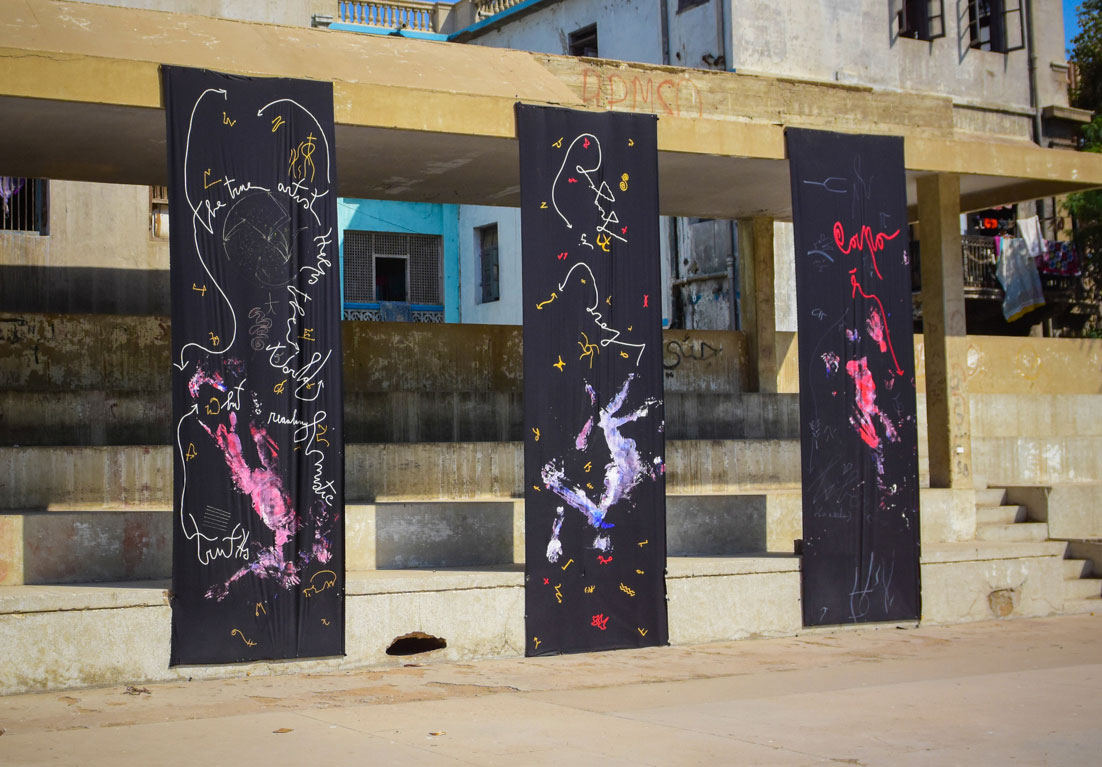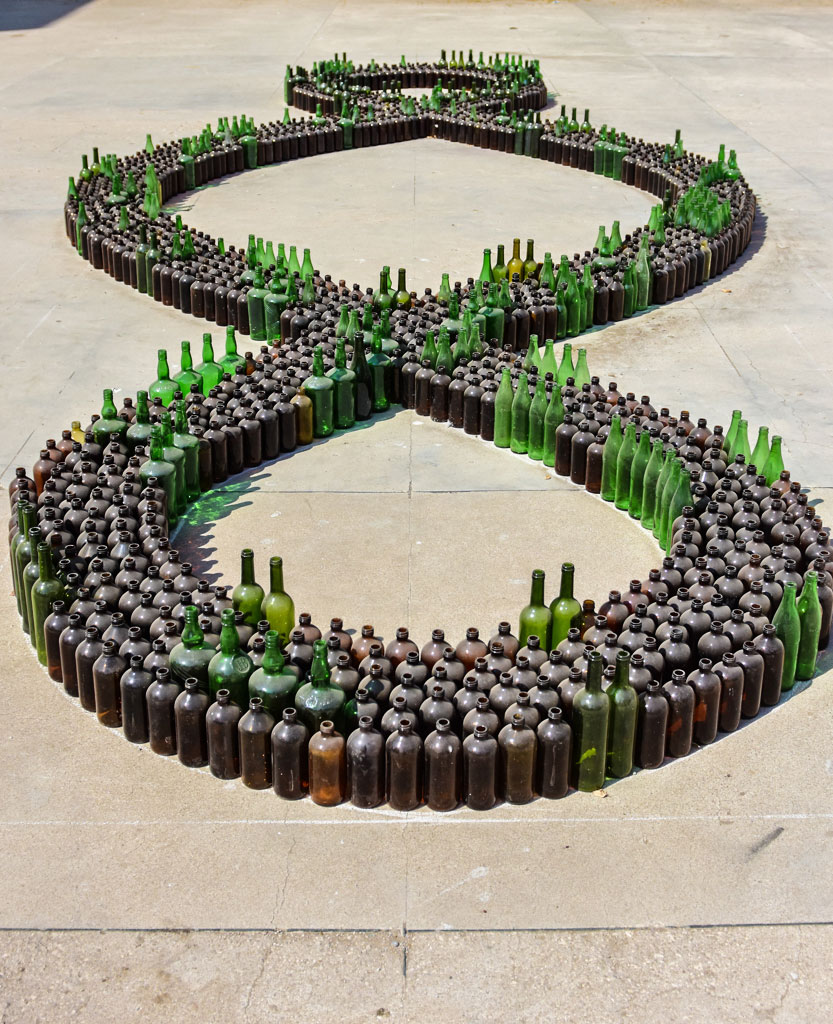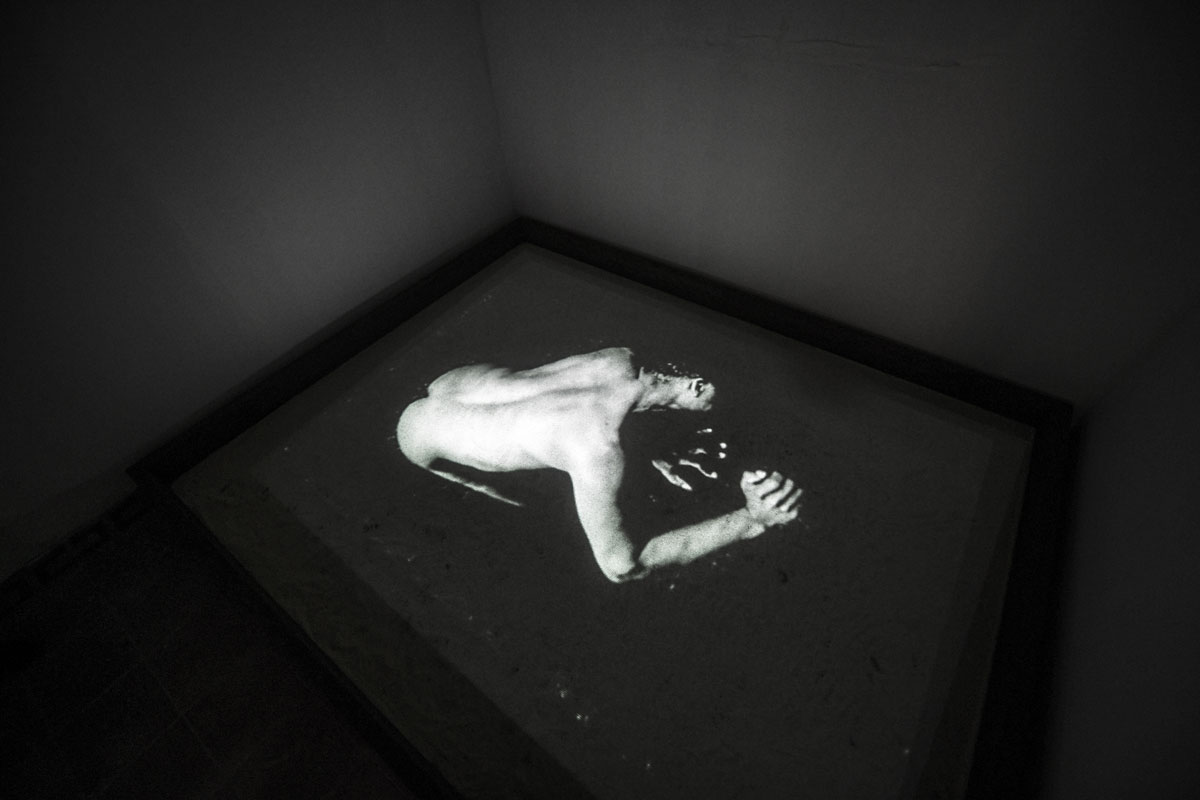2017 Karachi Biennale Guest Curators
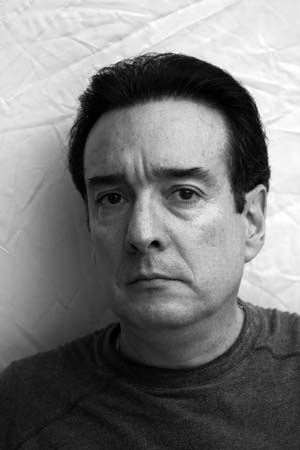
Carlos Acero Ruiz
Displacements, the invisible majority
-
Artists:
Carlos Acero Ruiz is a Dominican visual artist, art critic, curator and professor at Pontificia Universidad Católica Madre y Maestra of Santo Domingo. Acero Ruiz completed his undergraduate studies in Fine Arts and Social and Economic Sciences at the Universidad Nacional Pedro Henríquez Ureña in Santo Domingo, Dominican Republic, and subsequently obtained his Master’s Degree in ‘Arte Actual: Análisis y Gestión’ at Universitat de Barcelona, Spain.
Currently, Acero Ruiz is the Director of Centro de la Imagen, Dominican Republic; Artistic Director and Curator of the International Photography Festival PHOTOIMAGEN; Vice-President of the International Association of Art Critics (2016-2019, 2011-2014); Chair of the Congress Committee of International Association of Art Critics (2015-2018); a member of the International Council of Museums (ICOM); a member of the Organizing Committee for the National Biennial of Visual Arts of Santo Domingo; and the former President of Asociación Dominicana de Críticos de Arte (2012-2015). He co-authored Arte Contemporáneo Dominicano (2002), and Arte Dominicano Joven: márgenes, interacciones y nuevos territorios (2009), as well as the author of Africa Serena, 30 años después” photographs by Clara Martínez Thedy, edited in London by Scriptum Editions. He was the recipient of the AICA Prize for Outstanding Curatorial Work in 2007, 2008, 2010, 2011, 2012, 2013 and 2014 in the Dominican Republic.
Acero Ruiz has curated many group exhibitions which include artists from the Americas, Europe and Asia, presented in public museums and private cultural centers and institutions. He has curated numerous solo exhibitions, including those of: Graciela Iturbide (Mexico); Marcos López (Argentina); Ramon Oviedo (Dominican Republic); Jason Mena (Puerto Rico); Alejandro Cartagena (México); Maria Eugenia Haya (Cuba); Luis Gabú (Spain); Soucy de Pellerano (Dominican Republic); and Mario García Joya (Cuba).
Of Displacements, the invisible majority, Acero Ruiz writes: “We are living in tumultuous times. The world is experiencing migrations not seen since the end of World War II in 1945. These disseminations of human population generate flows that encompass ideology, politics, religion, warfare, socio-economic conditions, natural disasters and even, the reunification of families. In reality, no country is oblivious to these migration flows, whether as a homeland, a transition point or as a final destination. The contemporary visual narrative of these displacements play a prevailing role in the capture of the abandoned places as well as understanding and forging the refugees´ new abode, all the while and nevertheless having been uprooted, preserve their identity and create a sense of belonging in the territory where they have settled. As a result of the impact of these recent banishments, contemporary art provides us with a worldly view, where differences and distinctiveness cannot be denied and the outcome is the creation of our cartography. Displacements, the invisible majority is made up of nine artists who present the issue of migration flows in a broad and current setting, including the transition of life until death of the human being.
The group show: Displacements, the invisible majority is made up of nine artists who present the issue of migration flows in a broad and current setting, including the transition of life until death of the human being.
Mayra Martell (1979, México) establishes a resemblance between forcible displacements in Ciudad Juarez, located in Northern Mexico, and Saharawi, located in Africa. Both territories while geographically distant, located in different continents, share a sense of loss and abandonment. The first, Ciudad Juarez, whose inhabitants have fled due to violence and lack of public safety and the latter, Saharawi, due to more than 40 years of armed conflict in Occidental Sahara, both yearn the return to their homeland.
Jesús Hdez-Güero (1983, Cuba) proposes a look at the violence that has been generated in Venezuela in the last ten years, upon the political and economic crisis that afflicts all the social strata of the population and has faced on two conflicting sides this South American nation, in which there has been the greatest migration ever since the declaration of independence in 1811.
Roxanna Nagygellér (1965, Costa Rica) addresses the issue of Nicaraguan workers who only for economic reasons have migrated to Costa Rica to function as security guards in homes and businesses. Because these laborers are illiterate and uneducated, these works of art come accompanied by a letter written by children narrating the experiences and unforeseen events for these laborers endure while surviving and adapting to their new environment.
Gilda Pérez (1954, Cuba) has witnessed these feelings first-hand. After fleeing her native Cuba, she settled in two different countries, Venezuela and United States where she has maintained her traditions and social mores to always keep in mind her homeland. Her photo series become self-portraits in which Gilda rekindles those memories by seizing the object to narrow the gap between those memories of her mother country, while engaging with new ones on this journey she commenced two decades ago.
Lucila Quieto (1977, Argentina), Sara Roitman (1953, Chile) and Eduardo Gómez Ballesteros (1964, Spain) these three artists work on the subject of vanishment and death, which are part of these series of exhibits. Lucila Quieto, whose subject is recreating a non-existant photo next to her father, who vanished during the dictatorship in her country when she was only 4 months old. In a range of visuals, she recreates moments that they never really experienced in real life. Sara Roitman creates images where the soul abandons the physical body and, in an alternative way, projects fictional geographical forms around this same body. For his part, Gomez Ballesteros produces his body of work henceforth violent political processes, places of torture, imprisonments and executions carried through in different parts of the world. These results are images that suggest implicit violence captured through the symbolic narration of those sorrowful places where countless human beings suffered some kind of aggression.
Elvin Díaz (1979, Dominican Republic) develops under the delicate issue of the relationship between Haiti and Dominican Republic, two nations that share the same island and have confronted each other at war over the past centuries. His video explores the coexistence between the two nations in a social, cultural and economical aspect, specifically along the border where the largest binational marketplace takes place. The migration from Haiti to the Dominican Republic is a serious issue between the two nations forasmuch as one million Haitians reside illegally in the territory and Dominican laws do not bestow citizenship to illegal immigrants.
Jason Mena (1974, Puerto Rico) through symbolic expressions challenges the occupations of spaces and territories in Mexico and the manner in which history is written, many times, in reverse order. With the same poignancy, he engages the human body to recreate a geopolitical metaphor around the great powers.
The re-imagination and reconstruction of national borders is due in part to the refugee crisis. These are becoming less invisible and delimited as refugees and displaced people become part of the communities and project themselves towards the future. Displaced people have rights that must prevail no matter the circumstances that involve them.”
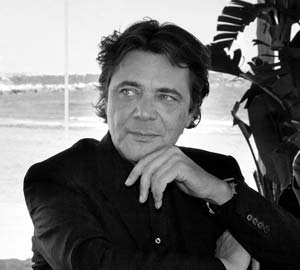
Paolo De Grandis
Art Among the People
-
Artists:
Paolo De Grandis, is an Italian contemporary art curator and President of PDG Arte Communications. Since 1984, he has been active in the sector of culture and art to promote the realisation of the structural conditions that can stimulate the development of the production and creation of cultural events and to encourage the cooperation between the main international organisations in the art and architecture sector.
Since 1995, Paolo De Grandis has organised/curated 118 Exhibitions in the Venice Biennale, 54 national participations, and 64 multilateral events presenting the first official participation of the following countries: Andorra; Côte d’Ivoire; Gabon; Jamaica; Morocco; the Principality of Monaco; Estonia; Latvia; Ukraine; Singapore; Ecuador (with an independent Pavilion, 2015), as well as the participation of Taiwan, Hong Kong, US Virgin Islands and Macao.
In 1998, he conceived the yearly exhibition OPEN: International Exhibition of Sculptures and Installations, based on a consolidated and successful exhibition formula in which the “artist-country” combination and the outdoor spaces at Venice become an international platform of exchange and interaction on which to rethink and redefine the current status of art through the meeting of artists, curators, institutions, embassies and ministries.
In 2006, he was appointed as the International Director of the Musée Hassan in Rabat, Morocco. In October 2011, De Grandis was invited by the City of Chengdu to open the 2011 Chengdu Biennale. Since 1984, he has curated many exhibitions worldwide at a variety of museums and art galleries, as well as the Korea-Seoul International Flag Art Festival - the official Opening Ceremony of the 2002 FIFA World Cup.
Launched in March 2016, From La Biennale di Venezia to MACRO. International Perspectives is a new long term exhibition project conceived and curated by Paolo De Grandis in collaboration with the MACRO (Museum of Contemporary Art in Rome) devoted to the presentation of some international installations from La Biennale di Venezia at MACRO’s spaces, as site-specifically reconstructed and remodelled. He has also recently been appointed International Curator for the Changwon Sculpture Biennale in Korea.
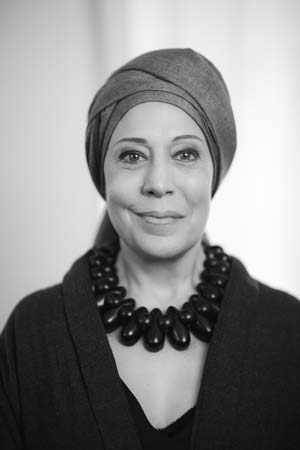
SPARCK (Dominique Malaquais and Kadiatou Diallo)
Decolonize This
-
Artists:

SPARCK – Space for Pan-African Research, Creation and Knowledge – is a program of experimental multi-disciplinary arts residencies, workshops, symposia, exhibitions, publications and performances centered on innovative, ethically driven approaches to urban space.
SPARCK projects are developed in partnership with a growing network of artists and cultural practitioners at work throughout Africa and the diasporas, in a call and response pattern that privileges out-of-the box, self-sustaining initiatives. Across the African world, SPARCK engages with creators working in image, sound, word and video, installation, transient architectures, cutting edge technologies and emergent media on projects that question the status quo, refusing clichés and easy answers. Projects are rarely one-off undertakings; driven by the artists who take part in them, they are encouraged to grow and bring into being new initiatives, within and beyond SPARCK’s ambit. SPARCK projects dissolve boundaries between disciplines and types of knowledge, opening up spaces of democratic exchange to foster dialogue across age, class, gender, spatial, occupational and ethnic divides.
SPARCK has no one center or base. It docks with partner initiatives and institutions, developing residencies with artists and mounting exhibitions, happenings and performances in a wide variety of spaces across the world. From street to studio and online, since its inception in 2008 SPARCK has staged projects in over a dozen countries in Africa, Asia, the Americas and Europe. Original, flexible set-ups offer artists and thinkers unorthodox and highly productive platforms to address how cities in Africa and her diasporas live, breathe, morph and grow. Alternative ways of thinking about urban spaces and cultures prompt radical re-readings of global experience and pave the way for socially inclusive practices of daily, communal engagement.
Determined to do away with clichés and preconceived notions, SPARCK projects engage with urban Africa as both a focus and a viewing platform – a space from which to look out at the world, so as to imagine the future of cities planet-wide.
SPARCK is run by a two-woman, activist-artist-writer-scholar team: Kadiatou Diallo and Dominique Malaquais. Together, Malaquais and Diallo are experimenting with novel ways of collaborating. Hierarchies are replaced with joint decision-making and collective responsibilities, physical centers and offices with mobile and virtual workspaces. Process and results are equally important and always experimental.
Of Decolonize This at the Karachi Biennale 2017, Dominique Malaquais writes: “[The thematic is based on] a series of short excerpts from texts that move us, we propose a voyage through the practice of five artists changing the face of contemporary reflection on (post)colonialism, (neo)coloniality and the quest for a decolonial future:
I
“It is no accident that modern cartography developed in parallel with the colonial enterprise. Colonization played a critical role in the emergence of new branches of knowledge able to respond to a growing need – that of controlling ever-larger territories. If science flowered in the age of colonialism, this was due not only to the curiosity of researchers at work in Europe, but also to the fact that colonial expansion both facilitated and rendered necessary such a flowering. Thanks to its discoveries, science was now in a position to open up new territories for conquest. In this manner the disciplines of cartography, geography, botanical science, biology and anthropology were born: the control of conquered and yet to be known territories required the development of forms of knowledge allowing them to be mapped, studied, named and, thus, possessed.”
(Giovanna Zapperi, “Cartographic Narrations,” in Kantuta Quirós and Aliocha Imhoff eds., Géo-esthétique [2014])
II
“First we must study how colonization works to decivilize the colonizer, to brutalize him in the true sense of the word, to degrade him, to awaken him to buried instincts, to covetousness, violence, race hatred and moral relativism […]; and we must show that […] a gangrene sets in, a center of infection begins to spread; and that at the end of all these treaties that have been violated, all these lies that have been propagated, all these punitive expeditions that have been tolerated, all these prisoners who have been tied up and ‘interrogated,’ all these patriots that have been tortured, at the end of all the racial pride that has been encouraged, all the boastfulness that has been displayed, a poison has been distilled into the veins of Europe and, slowly but surely, the continent proceeds toward savagery.
And then one fine day the bourgeoisie is awakened by a terrific boomerang effect: the gestapos are busy, the prisons fill up, the torturers standing around the racks invent, refine, discuss.
People are surprised, […] they wait, and they hope; and they hide the truth from themselves, that it is barbarism, […] the crowning barbarism that sums up all the daily barbarisms; that it is Nazism, yes, but that before they were its victims, they were its accomplices; that they tolerated that Nazism before it was inflicted on them, that they absolved it, shut their eyes to it, legitimated it, because until then, it had been applied only to non-European peoples; […] that they have cultivated Nazism, […] they are responsible for it”.
(Aimé Césaire, Discourse on Colonialism [1950])
III
“[T]he devastation that characterizes the Anthropocene is not simply the result of activities undertaken by the species Homo sapiens; instead, these effects derive from a particular nexus of epistemic, technological, social, and political economic coalescences figured in the contemporary reality of petrocapitalism. This petrocapitalism represents the heightened hierarchical relations of humans, the continued violence of white supremacy, colonialism, patriarchy, heterosexism, and ableism, all of which exacerbate and subtend the violence that has been inflected on the non-human world […] [This] crisis beckons art practice to imagine futures beyond the cynical recklessness of the myopic capitalist horizon.”
(Heather Davis and Etienne Turpin, “Art & Death: Lives Between the Fifth Assessment & the Sixth Extinction,” in Heather Davis and Etienne Turpin eds., Art in the Anthropocene: Encounters Among Aesthetics, Politics, Environments and Epistemologies [2015])
IV
“We are never going to get anywhere as long as our economies of attraction continue to resemble, more or less, the economy of attraction of white supremacy."
(Junot Diaz, keynote address, Facing Race conference [2012])











